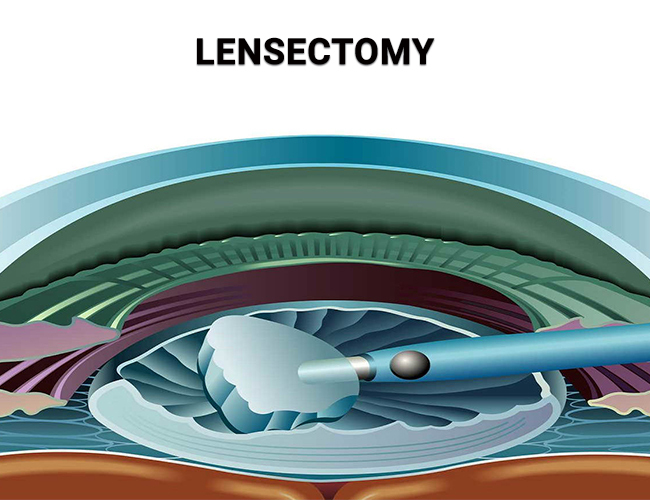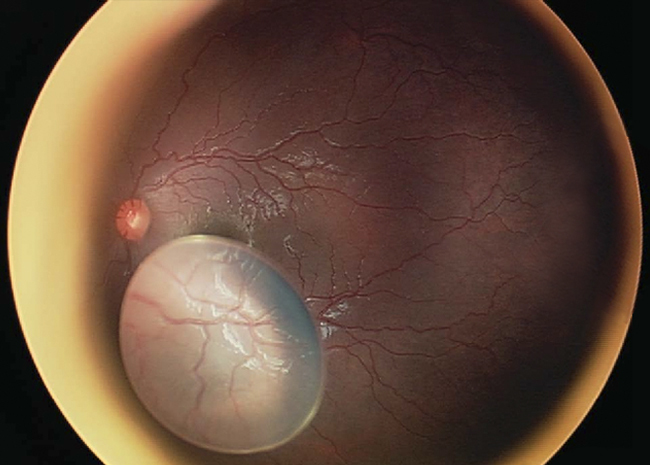 (212) 861-9797
(212) 861-9797
 (212) 861-9797
(212) 861-9797
Blurry or cloudy vision may mean you have cataracts. This eye condition affects the lens of your eye, limiting your vision and causing other symptoms. But you don’t have to lose your sight when you have access to the best eye doctors in NYC at Vitreous Retina Macula Consultants of New York. After reaching a definitive diagnosis, your doctor may recommend a lensectomy to remove your damaged lens and replace it with an artificial implant. Call VRMNY retina centers or visit one of their three locations in Manhattan, Brooklyn or Westchester to discover if your vision problems can be fixed with a lensectomy.
Lensectomy is an eye surgery procedure to remove a diseased or damaged lens from your eye. An ophthalmologist performs the procedure to remove a natural, crystalline lens to treat cataracts and a wide range of vitreoretinal disorders. During a lensectomy procedure, your eye doctor makes a tiny incision in your eye. After removing the natural lens, the doctor replaces it with an implant, called an intraocular lens (IOL).

Along with the cornea, the lens in your eye focuses light rays onto the retina at the back of your eyeball. When the lens focuses on nearby objects, it thickens. It thins when it focuses on distant objects. When an image is focused properly onto your retina, that image is sent to your brain through the optic nerve.
A diseased natural lens distorts your clear vision, requiring a diagnosis by an eye specialist. At Vitreous Retina Macula Consultants of New York (VRMNY), top ophthalmologists use advanced diagnostic imaging and other methods to determine the cause of your poor eyesight so they can treat it. To treat a range of eye conditions, these eye specialists offer:
Eye specialists use lensectomy to treat eye conditions and complications such as:
The potential of lensectomy surgery continues to expand, as ophthalmologists identify more uses for it. At VRMNY, the most experienced eye doctors and retina specialists perform this and other eye surgeries. They’ve invested heavily in eye care research, and they’re on the leading edge of the development of new diagnostic and therapeutic strategies.
Absolutely the most professional compassionate and caring doctor and Staff anyone could ask for. I recently had a retinal detachment and the doctor performed a miracle, restoring my vision beyond my expectation. I am forever grateful to Dr. Engelbert and the entire staff.
For your doctor to choose the most effective eye surgery, your diagnosis has to be correct. The eye doctors at VRMNY’s state-of-the-art eye facilities in New York City have access to advanced diagnostic equipment. These eye doctors carry out extensive diagnostic tests before developing an individualized eye treatment plan for you.

Once you’re diagnosed with cataracts or another lens-altering condition, your eye doctor recommends an appropriate lensectomy procedure. The different types of lensectomy procedures include:
One of the main indicators for lensectomy is the presence of cataracts. Cataracts affect the normally clear lens of your eye, causing clouding and blurred vision. This lens problem develops gradually, so you may not even realize your eyes have a problem. Signs of cataracts include:
The main causes of cataracts are cigarette smoking, alcohol use, air pollution, and family history. Regular eye exams can help detect the problem at an early stage, allowing for effective cataract treatment. If cataracts are impairing your vision, a pars planar lensectomy procedure may be the best solution.
Lensectomy is an outpatient procedure performed at your eye doctor’s office. If you need a lensectomy in both eyes, your doctor treats one eye at a time. The procedure takes just 10 to 15 minutes. The main steps in the treatment procedure include:
If you’ve noted a gradual decline in your vision, contact the eye specialists at VRMNY. These professionals at the oldest ophthalmology practice in New York City treat you gently as they work to diagnose and address your vision problems.
Let us help you enjoy your life
Call: (212) 861-9797To Speak With An Appointment Coordinator Now